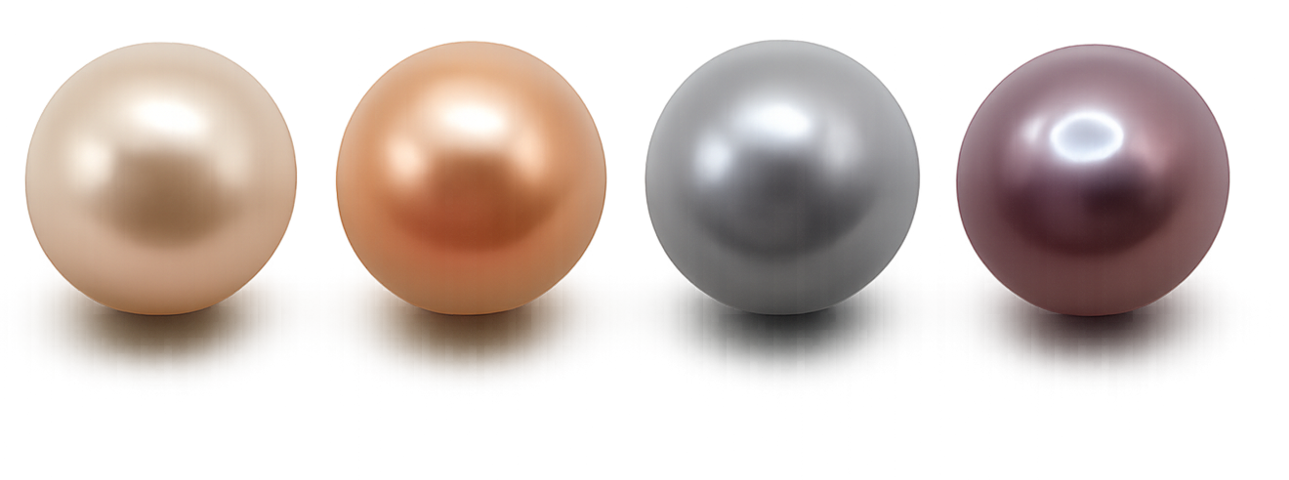Unpublished post
The World of Pearl Colours

“The colour of a pearl isn’t a trend. It’s her voice.”
At a glance, pearls seem simple — white, round, luminous. Not Just White... But look again. And you’ll find the finest spectrum in nature.
From the warm gold of South Sea pearls to the stormy silver of Tahitian varieties, from violet-pink freshwater gems to blush lavender Edison pearls — the world of cultured pearls is a world of nuance, undertones, and secrets beneath the surface.
Where colour begins
A pearl’s colour forms as layers of nacre build up over time — layer upon layer of calcium carbonate and conchiolin, deposited by the mollusk around a nucleus. This nacre isn’t just a protective shell. It’s a mirror of life inside the mollusk — affected by genetics, environment, water temperature, trace minerals, and time.
Some mollusks naturally favour cool tones — silver, green, charcoal.Others yield warmer hues — peach, cream, champagne.But even two pearls from the same farm can differ subtly, like twins with different moods.
Understanding overtone
Pearl colour isn’t just about base tone. It’s also about overtone — the translucent whisper of colour that floats above the surface like a shadow of light.
- A white pearl may carry a pink overtone — soft and romantic.
- Another may glow with blue overtone — quiet and mysterious.
- Golden pearls may shimmer with rosé or even greenish halo, shifting in light.
Overtone is what gives a pearl its voice.It’s not added. It’s grown. And it changes how a pearl speaks to the skin, the eye, the occasion.
Why rare colours matter
Certain shades — deep lavender, rich aubergine, or peacock black — are rare because they result from exceptional conditions. The right mollusk. The right water. The right time. That’s why pearls of strong natural colour, not dyed or enhanced, are so highly prized.
At BRILLIAN@T, we never choose by trend.We select each pearl by harmony — colour, shape, and lustre working as one.
Selection is not surface-deep
Two pearls may both look lilac.One may have a nacre thickness of 0.4 mm — its glow fading in months.The other — over 1.5 mm, with a lasting radiance that deepens over time.They look the same. But they live differently.
This is why our Certification Centre evaluates not only colour, but its depth and structural base. Every certified piece carries overtone description, nacre measurement, and clarity rating — because light isn’t just seen, it’s held.
The pearl’s palette isn’t about fashion.It’s a dialogue with light. And every gem has its accent.





